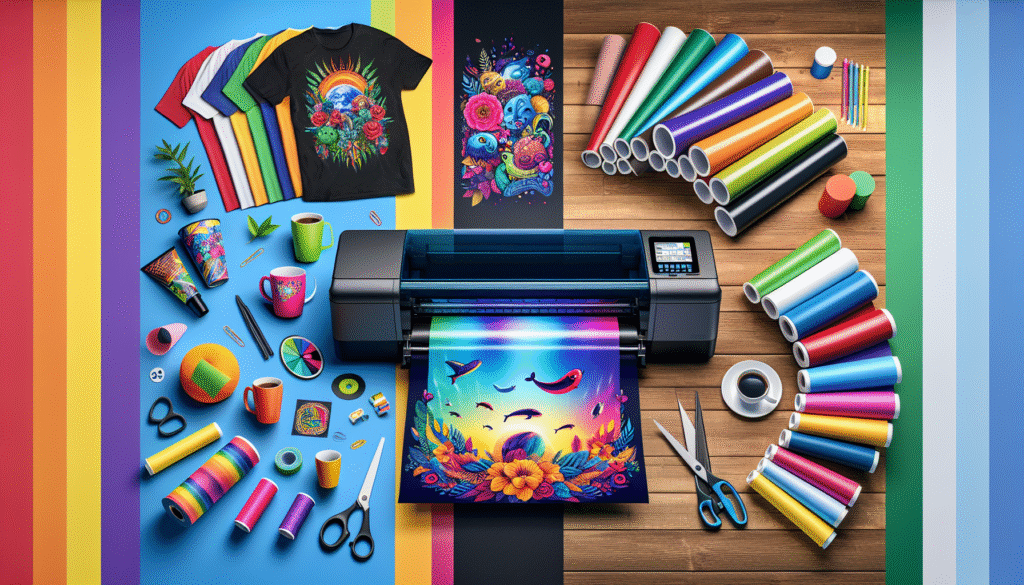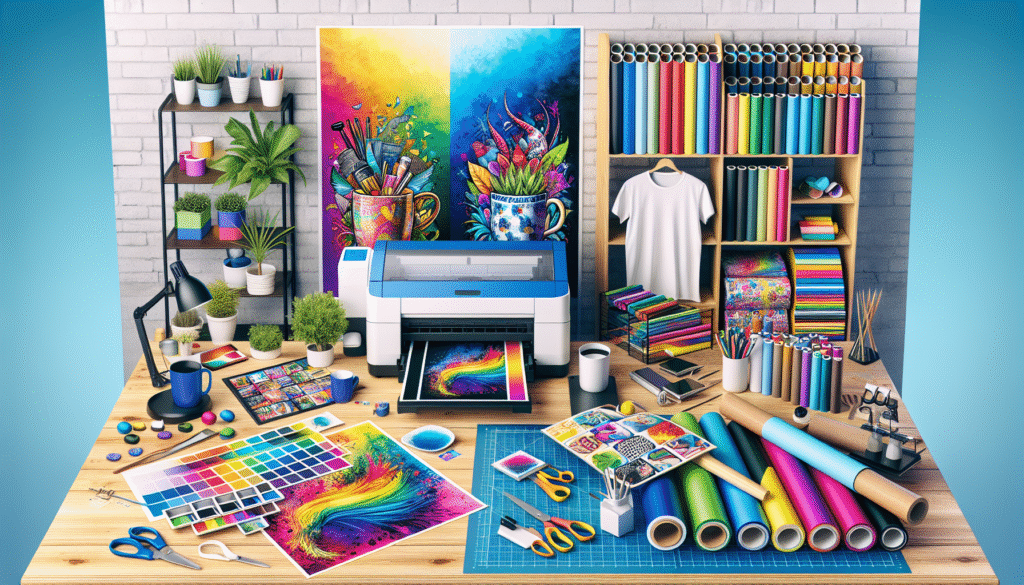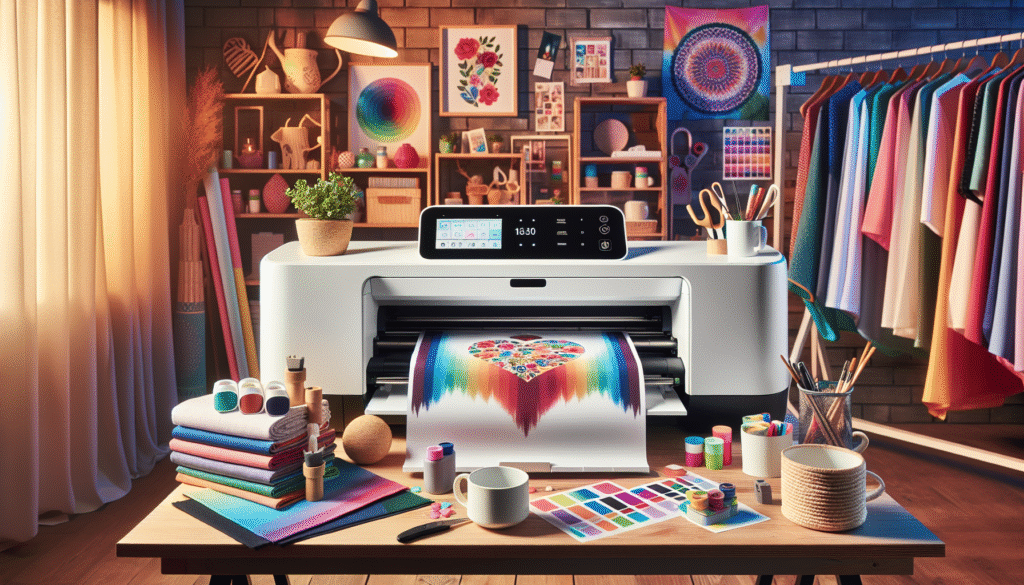Have you ever wondered which printing method is best for your creative projects: sublimation printing or heat transfer vinyl? This is a common question among DIY enthusiasts and small business owners who want to produce vibrant, durable designs on their fabrics and other surfaces. Whether you’re crafting custom t-shirts, mugs, or mouse pads, understanding the differences between these two popular methods can be essential to achieving stunning results. Let’s explore the nuances of each approach, comparing their benefits and drawbacks in a friendly and engaging manner.

Understanding Sublimation Printing
Before diving into a head-to-head comparison, it’s essential to understand what sublimation printing truly entails. Sublimation is a chemical process where a solid turns directly into a gas without passing through a liquid state. In printing, this means transferring dye onto a substrate using heat. Intrigued yet? We thought you might be!
What is Sublimation Printing?
In simpler terms, sublimation printing involves using special dyes that get embedded into your material of choice, typically fabrics with high polyester content. The design is printed onto a special paper with these dyes, which are then heat-pressed onto the material. The heat causes the dyes to vaporize and bond with the fibers of the fabric. This process requires a sublimation printer and heat press and allows for vivid and long-lasting images that don’t peel or fade easily.
Pros of Sublimation Printing
- Vibrant and Durable Colors: Sublimation can produce incredibly vibrant colors. The dye merges with the fibers, ensuring that the print won’t crack, peel, or fade over time.
- Seamless Transfers: Because the dye becomes part of the fabric, there’s no added texture like a layer above the fabric.
- Great for Complex Designs: If you’re working with intricate patterns or multiple colors, sublimation can handle the detail without a hitch.
- Eco-friendly Options: Some sublimation inks and transfer papers are designed to be more environmentally friendly.
Cons of Sublimation Printing
- Fabric Limitations: Because it bonds with polyester, sublimation is primarily limited to poly-based fabrics, meaning no cotton or wool.
- Requires Special Equipment: Investing in both a sublimation printer and a heat press can be costly.
- White or Light-Colored Base: Subliming on dark materials is not feasible. If your fabric isn’t white or light-colored, results may not be as expected.
The Basics of Heat Transfer Vinyl
If sublimation isn’t quite aligning with your needs, you might be more interested in heat transfer vinyl (HTV). Unlike dye-based methods, HTV uses a solid vinyl sheet that is cut into designs and heat-pressed onto materials. Let’s take a closer look at this fascinating method.
What is Heat Transfer Vinyl (HTV)?
Heat transfer vinyl involves cutting out designs from sheets of colored vinyl using a cutting machine. The design is then heat-pressed onto a fabric using a separate adhesive layer, which can adhere to a variety of fabrics. This method is as creative as it is tactile, offering us a more hands-on approach than sublimation. Sounds fun, right?
Pros of Heat Transfer Vinyl
- Versatile Material Options: HTV works on a wide range of materials, including cotton, polyester, and blends.
- Brilliant for Dark Fabrics: Unlike sublimation, HTV can be applied to dark fabrics without a hitch.
- Variety of Finishes: From matte and glossy to glitter and glow-in-the-dark, HTV offers diverse finishes.
- Affordable Start-Up Costs: Initial investment is generally lower, as you need only a vinyl cutter and heat press.
Cons of Heat Transfer Vinyl
- Less Durable on Stretch: HTV can crack or peel over time, especially if the fabric is frequently stretched.
- Limited Detail in Designs: Intricate designs can be more challenging because each section must be cut from vinyl.
- Application Process Takes Time: The cut-and-press method can be time-consuming, especially for multi-colored designs.

Sublimation Printer vs. Heat Transfer Vinyl: Direct Comparison
With a thorough understanding of both methods, let’s compare them side by side to see which might work best for your specific needs. Below is a table that highlights key differences to offer a snapshot comparison.
| Feature | Sublimation Printing | Heat Transfer Vinyl (HTV) |
|---|---|---|
| Material Compatibility | Best on polyester; limited on non-poly fabrics | Versatile; works on cotton, polyester, and blends |
| Color Vividness | Bright, vibrant colors | Good, but may vary with vinyl quality |
| Durability | High; part of fabric | Prone to crack/peel over time, especially on stretch fabrics |
| Initial Cost | Higher; requires specialized printer and heat press | Lower; mainly cutter and press |
| Design Flexibility | Excellent for intricate, multi-color designs | Limited detail; time-consuming for multi-color designs |
| Base Fabric Color | Best on white/light fabrics | Can be applied to any color |
| Start-Up Ease | Moderate; learning curve with equipment | Easy; simpler set-up |
Evaluating the Right Choice for Us
So, how do we decide? The decision largely depends on the specific requirements of our projects. Both methods have their unique appeals, yet their differences are crucial in guiding us toward the right choice. Let’s talk about some considerations.
Project Goals
If our aim is to produce elaborate designs for garments that require intricate artwork or large batches, sublimation might be better. This method ensures high-quality results, especially if we stick with polyester fabrics. On the other hand, HTV is excellent for custom creations, especially those involving dark fabrics or ones where various textures could enhance the design.
Budget Considerations
HTV is generally more accessible financially, especially for hobbyists or small-scale creators. However, if our goals involve scale or complexity, investing in sublimation tools might pay off over time. Initial outlay differences might seem stark, but the scale of operations often determines overall value.
Usage and Wear
Before choosing a method, think about how the items will be used. For textiles expected to withstand repeated washing, sublimation’s durability will be a plus. Conversely, for items that won’t face significant wear (like decorative shirts or one-time event apparel), HTV should suffice.
Creative Freedom and Design Intricacy
Desiring to get creative or adhering to simple designs? Sublimation’s capacity for numerous colors and seamless blending is unmatched. However, HTV shines when we want to add unique tactile finishes such as glitter or reflective surfaces, offering a vibrant palette in its way.
Final Thoughts and Recommendations
Both sublimation and HTV offer incredible opportunities to express creativity through printing. The decision between the two should be guided by the type of projects we envision, the materials we wish to use, the scale of production, and our budgetary constraints.
Ultimately, exploring options within our capabilities and considering ongoing needs will align us with the right choice. After all, we’re in this to create things that not only delight but endure, whether it’s a beloved t-shirt collection or unique mugs for our tea-loving friends. Remember, the magic is in the making and the thoughtful decisions that pave the way.
Maybe one day, with enough practice and perhaps a few heated arguments with our heat press, we’ll become the masters of whichever craft we choose. Until then, let’s continue to connect with our materials and ideas, discovering our unique preferences and letting creativity lead the way.

